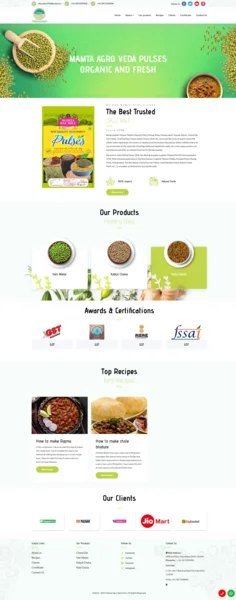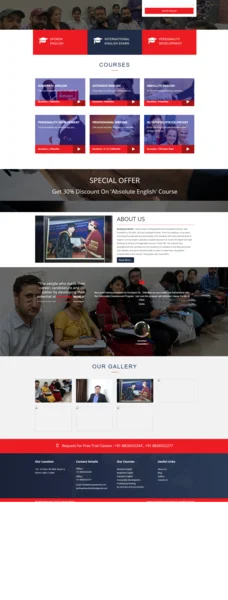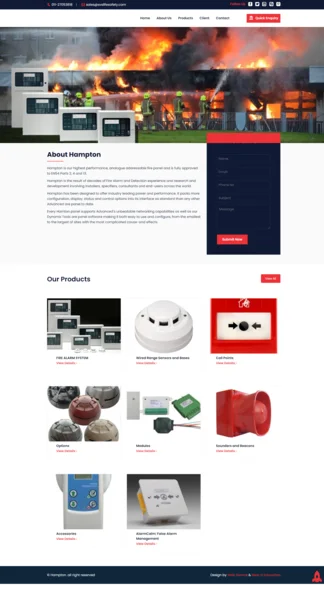Short Term Web Development
| Training Mode | Regular | Fastrack | Crash |
|---|---|---|---|
| Classroom | Online | 4 Months (M,W,F or T,T,S Class) (3 Class in a week) |
2 Months (Monday to Friday Class) (5 Class in a week) |
1 Month (Monday to Friday Class) (5 Class in a week 1:30 hour duration) |
WHO CAN JOIN Short Term Web Development
- 10th, 12th or Equivalent
- BCA/MCA, B.Tech, M.Tech, B.sc (IT), B.sc(CS)
- Diploma Candidates
Module-1 Core Web Development : Duration (2 Months)
INTRODUCTION TO PHP & LOCAL SERVER INSTALLING
- What is Php
- Server Side vs Client Side Language
- What is server
- Installing xampp/wamp
- Directory Structure of xampp/wamp
PHP BASICS
- Basic Syntax
- Variables
- echo/print
- data types
- operators
PHP CONDITIONS,LOOPS
- if condition
- if else condtions
- nested if else
- switch statement
- do while loop
- while loop
- for loop
- foreach loop
PHP FUNCTIONS
- What is function
- function with arguments
- return function
PHP ARRAY,STRING
- What is Array
- Accessing array
- array methods
- What is string
- accessing string
- string methods
PHP FORM & FILE UPLOAD
- action in form
- get/post in form
- form validation
- sending email
- file handling
- file uploading
- file upload validation
- multiple file uploading
- file upload with preview
PHP SESSION & COOKIES
- What is Session
- Sending data to another page
- Login using Session
- What is Cookies
- How to set/remove cookies
- save password example using cookies
COURSE CONTENTS OF MYSQL DATABASE
DATABASE BASICS
- What is Database
- Need of Database
- Tables
- primary key
- foreign key
- data types
NORMALIZATION IN DATABASE
- What is Normalization
- Need of Database Normalization
- 1nf
- 2nf
- 3nf
- bcnf
PHP WITH MYSQL
- mysqli vs mysqli
- Connect to database
- create database
- drop database
- select database
- create table
- insert data into table
- update data
- select data
- delete data
FILTERING DATA IN MYSQL
- where
- and
- or
- between
- in
- like
- limit
- is null
MYSQL JOINS
- mysql join
- inner join
- left join
- right join
- cross join
- self join
MYSQL GOUPING DATA
- Group By
- Having
- RollUp
MYSQL TRANSACTION
- MySql Transaction
- MySql Table Locking
MYSQL IMPORT & EXPORT
- Import CSV to MySql
- Export Mysql to CSV
Module-2 Web Development Using Framework : Duration (2 Months)
CODIGNITER BASICS
- What is Framework
- What is MVC
- Codeigniter vs Core Php
CODIGNITER SETUP & DIRECTORY STRUCTURE
- Installing Codeigniter
- Directory Structure
MODEL,VIEW,CONTROLLER
- What is model
- Where to find model directory
- Creating file in model directory
- How to use model file
- What is view
- Where to find view directory
- Creating file in view directory
- How to use view file
- What is controller
- Where to find controller directory
- Creating file in controller directory
- How to use controller file
WORKING WITH SOME ESSENTIAL FILES
- autoload file
- config file
- database file
- routes file
WORKING WITH HEADER,FOOTER OR COMMON PART
- Cutting header & Footer
- how to use header & footer in all pages
WORKING WITH EMAIL,FILE UPLOADING,FORM
- form input values
- form validation
- email setup
- file uploading
- multiple file uploading
CODEIGNITER SESSION & COOKIES
- What is Session
- Sending data to another page
- Login using Session
- What is Cookies
- How to set/remove cookies
- save password example using cookies
WORKING WITH DATABASE
- Database Configuration
- Database Connectivity
- select data
- insert data
- update data
- delete data
FILTERING DATA IN CODEIGNITER
- where
- and
- or
- between
- in
- like
- limit
- is null
JOINS IN CODEIGNITER
- inner join
- left join
- right join
- cross join
- self join
CODEIGNITER GOUPING DATA
- Group By
- Having
- RollUp
CODEIGNITER TRANSACTION
- Transaction
IMPORT & EXPORT
- Import CSV to MySql
- Export Mysql to CSV
-

Name : Raju Kumar
Course : Web Design & Web Development
Project : mamtaagroveda
Guided By : Rakesh Sir
-

Name : Ram Bhajan
Course : Web Design
Project : Abeautifulmindclinic
Guided By : Rakesh Sir
-

Name : Rahul Kumar
Course : Web Design & Web Development
Project : Dushyantworld
Guided By : Rakesh Sir
-

Name : Nisha Shah
Course : Web Design & Web Development
Project : hamptonfirealarm
Guided By : Rakesh Sir
-

Name : Aman Singh
Course : Web Design & Web Development
Project : travellingsouls
Guided By : Rakesh Sir
-

Name : Deepak Hooda
Course : Web Design & Web Development
Project : dhanashreeimpex
Guided By : Rakesh Sir
-

Name : Amar Singh
Course : Web Design
Project : choudharyinteriors
Guided By : Rakesh Sir
-

Name : Raju Singh
Course : Web Design
Project : Astroupchar
Guided By : Rakesh Sir
Contact Us
Course Feedback
Student Projects
-

Name : Arjun Das
Course : Web Design & Web Development
Project : Completerajasthan
Guided By : Rakesh Sir
-

Name : Raju Singh
Course : Web Design
Project : Astroupchar
Guided By : Rakesh Sir
-

Name : Amar Singh
Course : Web Design
Project : choudharyinteriors
Guided By : Rakesh Sir
-

Name : Deepak Hooda
Course : Web Design & Web Development
Project : dhanashreeimpex
Guided By : Rakesh Sir
-

Name : Aman Singh
Course : Web Design & Web Development
Project : travellingsouls
Guided By : Rakesh Sir
-

Name : Nisha Shah
Course : Web Design & Web Development
Project : hamptonfirealarm
Guided By : Rakesh Sir
-

Name : Rahul Kumar
Course : Web Design & Web Development
Project : Dushyantworld
Guided By : Rakesh Sir
-

Name : Ram Bhajan
Course : Web Design
Project : Abeautifulmindclinic
Guided By : Rakesh Sir











